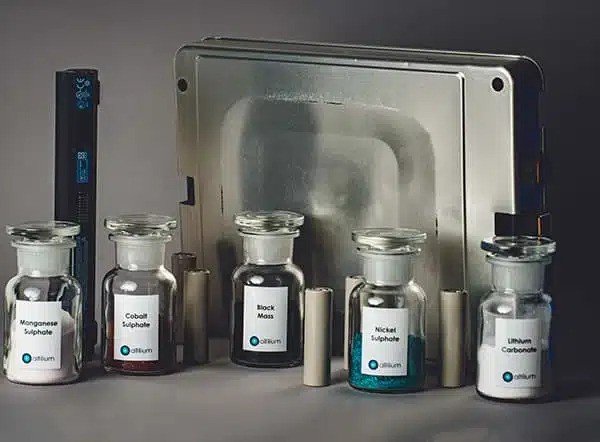A new study carried out by Imperial College London has found that Altilium’s recycled EV battery materials can match, and even surpass, the performance of virgin mined materials. ICL’s analysis of Altilium’s recycled cathode active materials (CAM) confirmed distinct improvements in purity, morphology, and electrochemical performance, compared to commercially available materials.

Under the research program, ICM carried out extensive electrochemical testing of coin cells and pouch cells manufactured with recycled CAM produced at Altilium’s ACT1 facility in Devon. The results demonstrated superior rate and cycle performance compared to commercially available CAM used in high-nickel NMC 811 batteries. With a cycle cell capacity exceeding 150 mAh.g⁻¹, Altilium’s materials significantly outperformed typical ranges for mined materials.
Analysis of the recycled CAM samples also revealed significant advancements in particle size and distribution, contributing to improved stability and cycling behavior. Crucially, minor changes observed during testing affirmed the chemical and physical robustness of the recycled CAM, further highlighting its potential for long-term battery performance.
The findings underscore the potential of Altilium’s proprietary EcoCathode process, which is capable of recovering over 95% of critical metals, including lithium, from end-of-life EV batteries. By upcycling these materials into high-quality CAM, Altilium is able to offer UK cell manufactures and automotive OEMS with a sustainable domestic source of high-performance battery materials, helping them to meet their net zero targets and reducing the UK’s reliance on imported virgin materials.
The technical advantages of CAM from recycled EV batteries over virgin CAM sourced from mining and refining stem from the inherent properties of the recycled materials, as well as process efficiencies. Unlike virgin ores, which vary in quality and require extensive refinement to remove impurities, recycled materials are derived from standardized, manufactured batteries, reducing impurities and variability in metal composition.
Recycled CAM precursors can also retain favorable crystal structures and grain morphology, which can be leveraged during re-synthesis for high-performance materials, while consistent particle sizes aid in the production of CAM with better electrochemical properties. Furthermore, recycling allows for precise adjustments in CAM composition, enabling the development of nickel-rich or cobalt-free formulations tailored for next-generation EV batteries.

